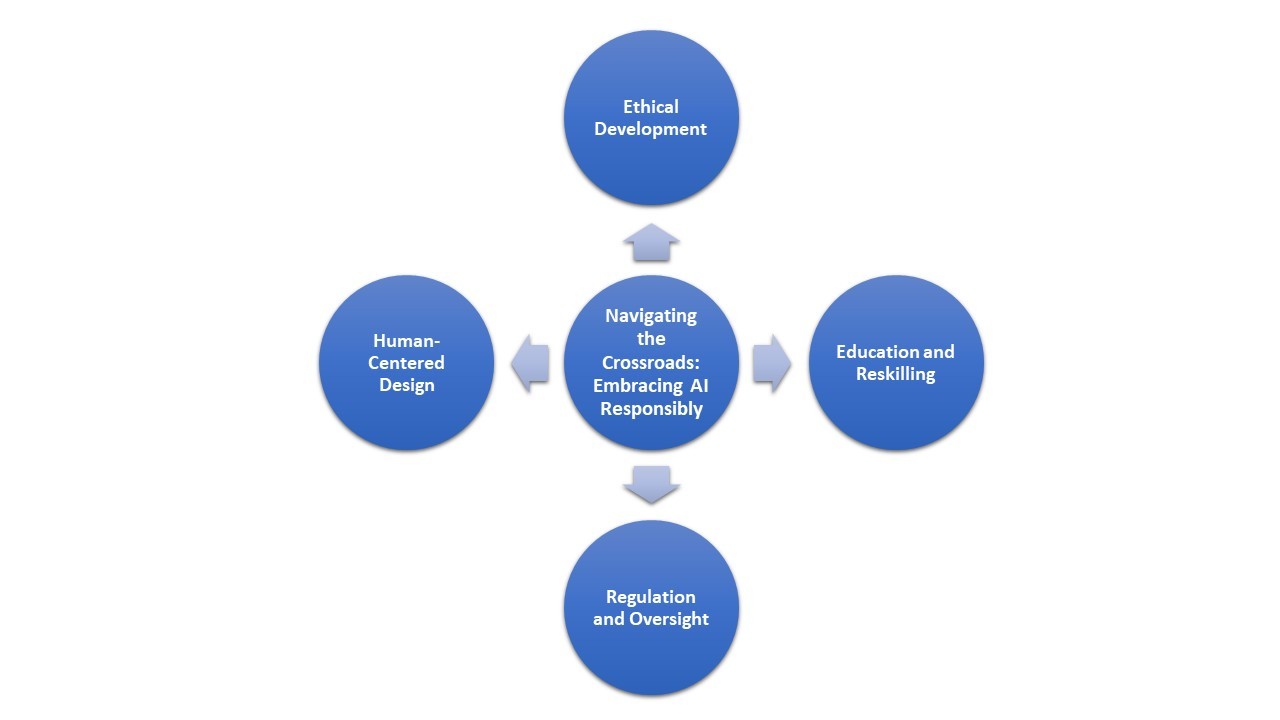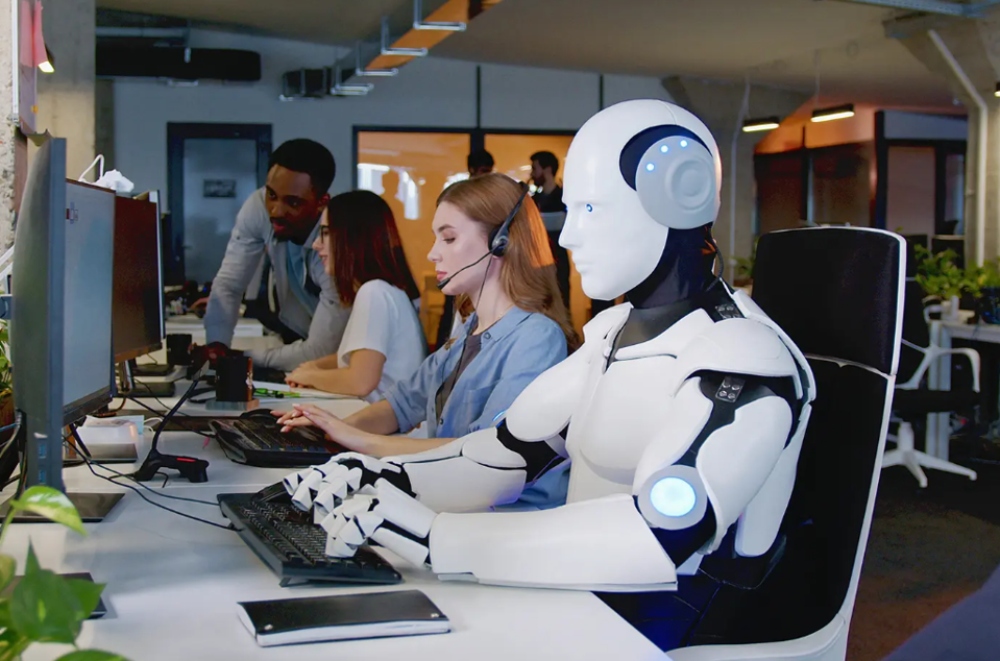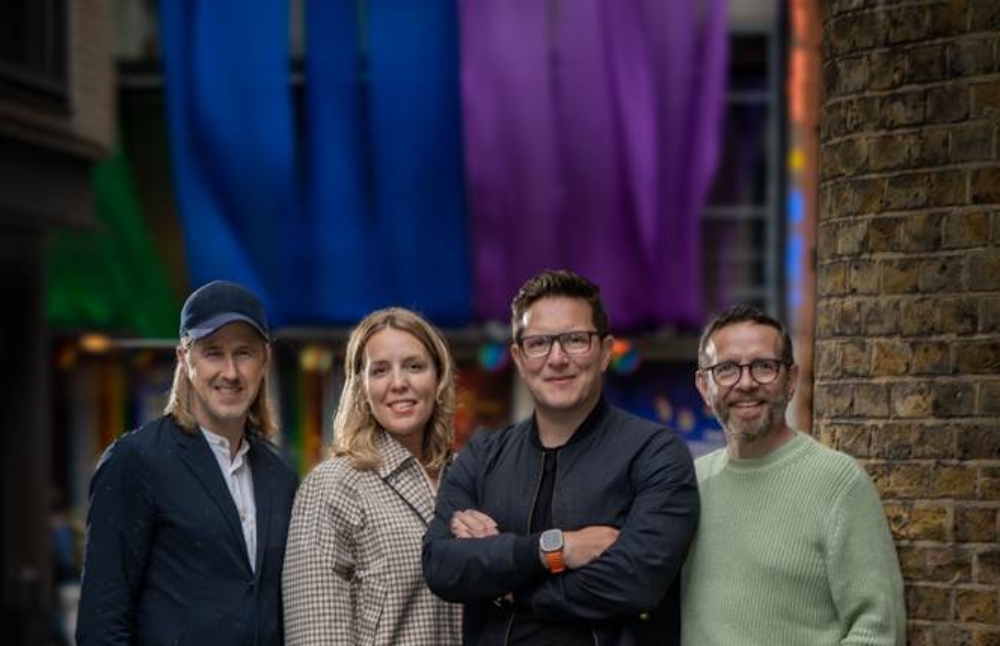
Why Humans Should Both Embrace and Approach AI with Caution
AI promises a future with robots solving humanity's most pressing problems.
Beyond the sci-fi fantasy lies a reality far more nuanced, a reality where AI's potential for good is entwined with the risk of unintended consequences. Ignoring this duality, dismissing both the benefits and the dangers, would be a grave mistake.
The Allure of AI: Progress at Breakneck Speed
Humanity thrives on progress, and AI offers an unprecedented leap forward. Its ability to crunch vast amounts of data, identify patterns invisible to the human eye, and automate complex tasks promises incredible advancements in healthcare, science, and technology. Imagine personalized medicine tailor-made to your unique genetic code, scientific breakthroughs powered by lightning-fast simulations, or self-driving cars that eliminate traffic accidents. These are not distant dreams; they are the tangible possibilities within AI's grasp.
Beyond concrete applications, AI offers the potential to reshape our understanding of the world. It can delve into the mysteries of the human brain, analyze the intricate interactions of ecosystems, and even explore the farthest reaches of the universe. By pushing the boundaries of knowledge, AI can enrich our lives in ways we can only begin to imagine.
The Shadows Lurking Within: Potential Pitfalls and Unforeseen Consequences
However, it would be naive to ignore the shadow cast by AI's immense power. The very capabilities that promise progress can also become instruments of harm. Job displacement due to automation is a pressing concern, with entire industries potentially facing obsolescence. Bias embedded in training data can lead to discriminatory algorithms, perpetuating injustices in fields like criminal justice and loan approvals. Furthermore, the opaqueness of some AI systems makes it difficult to understand their decision-making processes, raising concerns about accountability and transparency.
Perhaps the most significant risk lies in the realm of autonomous weapons. Imagine drones making life-or-death decisions without human intervention, a future where war becomes a cold, calculated exchange of algorithms. The ethical implications of such advancements are chilling, with the potential to rewrite the very definition of conflict.

Navigating the Crossroads: Embracing AI Responsibly
Ignoring these risks would be foolish, but succumbing to fear and halting progress altogether would be equally shortsighted. The key lies in a balanced approach, one that acknowledges the immense potential of AI while working tirelessly to mitigate its risks. This necessitates a multi-pronged strategy:
-
Ethical Development: Establishing clear ethical frameworks for AI development is crucial. We must ensure that AI systems are aligned with human values, fostering fairness, transparency, and accountability. This requires collaboration between technologists, policymakers, and ethicists to create robust safeguards against bias and unintended consequences.
-
Education and Reskilling: The workforce must be prepared for the inevitable transformations brought about by AI. Extensive programs for education and reskilling are necessary to equip individuals with the skills needed to thrive in an AI-driven world. This also involves promoting lifelong learning and adaptability to ensure long-term employability.
-
Regulation and Oversight: While stifling innovation must be avoided, a degree of regulation is crucial to prevent the misuse of AI. Governments and international bodies must work together to establish clear rules and guidelines for AI development and deployment, particularly in sensitive areas like autonomous weapons.
-
Human-Centered Design: Ultimately, AI must serve humanity, not replace it. The focus should be on developing AI systems that complement and augment human capabilities, not automate them away. This human-centered approach ensures that AI remains a tool for progress, not a force for alienation or exclusion.
A Dance with Technology
Humanity's relationship with AI is not a battle for dominance, but a delicate dance between ambition and prudence. There is no turning back from the transformative power of this technology, but embracing it blindly would be foolhardy. Instead, we must approach AI with cautious optimism, harnessing its potential for good while acknowledging and mitigating its inherent risks. By embracing a proactive and responsible approach, we can ensure that AI becomes a force for progress, one that enriches our lives without compromising our humanity.
The future is not a preordained script, it is a blank canvas waiting to be painted. Whether we become slaves to our creations or forge a harmonious partnership with technology is a choice we make today. Let us choose wisely, with eyes open to both the light and the shadows, and write a story of progress were humanity and AI dance in unison, towards a brighter, shared future.
Trending
-
1 UK Tech Sector Secures a Third of European VC Funding in 2024
Azamat Abdoullaev -
2 France’s Main Problem is Socialism, Not Elections
Daniel Lacalle -
3 Fed Chair Jerome Powell Reports 'Modest' Progress in Inflation Fight
Daniel Lacalle -
4 AI Investments Drive 47% Increase in US Venture Capital Funding
Felix Yim -
5 The Future of Work: How Significance Drives Employee Engagement
Daniel Burrus





Comments